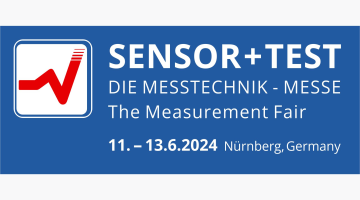Measurement amplifiers are used to amplify the sensor's low output signal UD in the range of millivolts to a level in the range of volts or to an output current, e.g. 4 ... 20mA at the analogue output UA.
The measurement amplifier also provides the bridge excitation voltage US for the Wheatstone bridge. The measurement amplifiers uses its own voltage stabilization, so that the power supply may be an unregulated operating voltage UB of e.g. 10 ... 28 V DC.

UA: Analogue output; UB: Supply voltage; T: digitale zero adjustment input; S: digitale input for Autoscale-Function; SW1, SW2: Threshold outputs;
Set Zero Function
Almost all measuring amplifiers of ME measuring systems have a digital control input "T" or "Tare". A signal at the control input triggers an automatic zero balance. Depending on the model of the measuring amplifier or depending on the configuration setting, the output will then be at 0V or 4mA or 12mA.
The triggering (debounce time, level, edge) differs depending on the amplifier model.
b) By applying the zeroing function, a constant offset is taken into account. The offset is stored in a non-volatile memory and is retained after a power failure.

Scaling Function
c) Most amplifiers offer the possibility to adjust the input sensitivity in 4 steps: 2 mV/V - 1 mV/V - 0.5 mV/V - 0.2 mV/V (GSV-1, GSV-11)
Some amplifiers have an "autoscale function" (GSV-6L, GSV-6K, GSV-15). This infinitely adjusts the input sensitivity so that the signal at the input is at e.g. 100% of the output signal is scaled. The autoscale function is also scalable so that e.g. scaled to 50% or 10% of the output signal. This function is useful when e.g. only a partial load can be applied during calibration.
d) In addition to the standard version with analog output -10V to + 10V, further model variants with e.g. 4 ... 20mA or -5V ... + 5V available.
e) The output signal may e.g. be shifted by + 5V or + 12mA or other offsets.
TEDS
The GSV-6 and GSV-8 models provide the ability to automatically adjust the input sensitivity by reading "TEDS" ("Transducer Electronics Data Sheets") integrated into the sensor or connector.
more about TEDS




